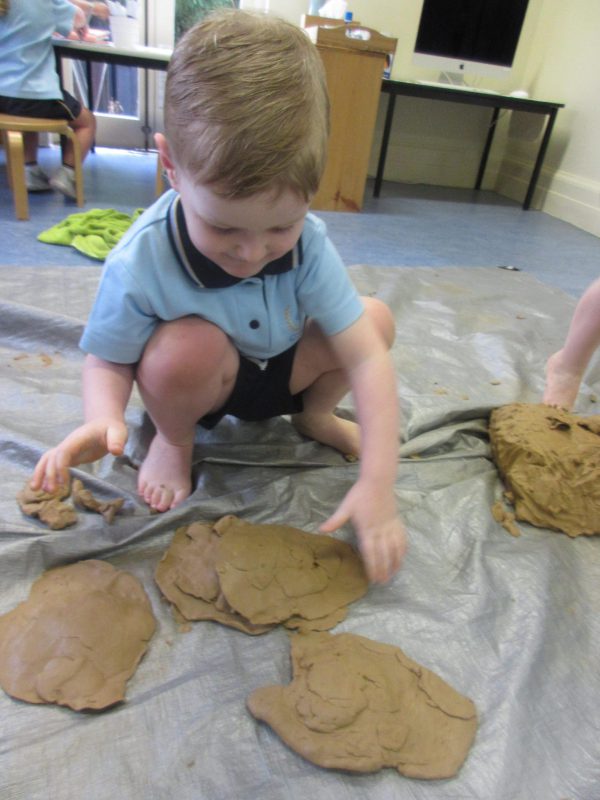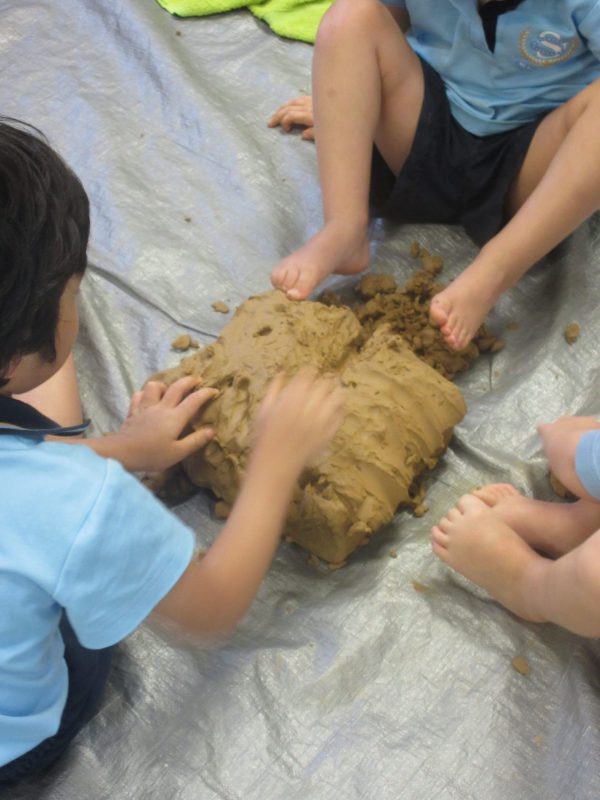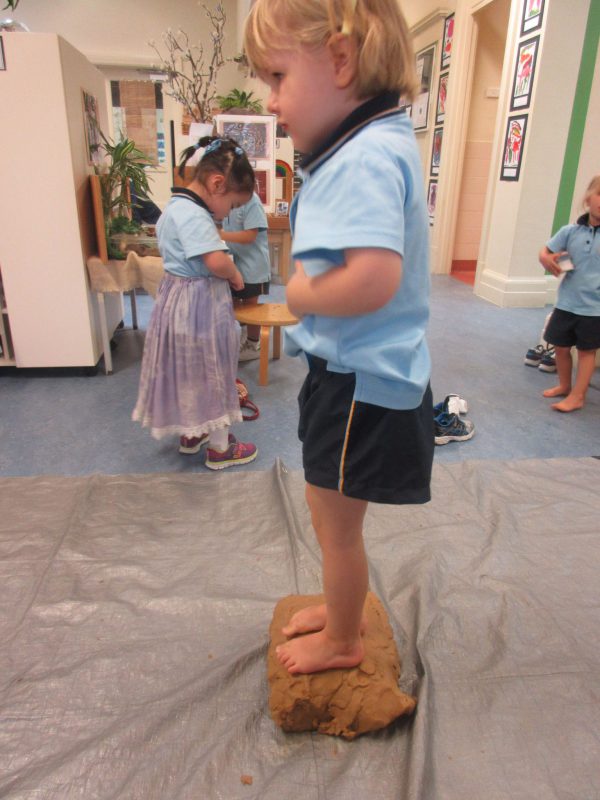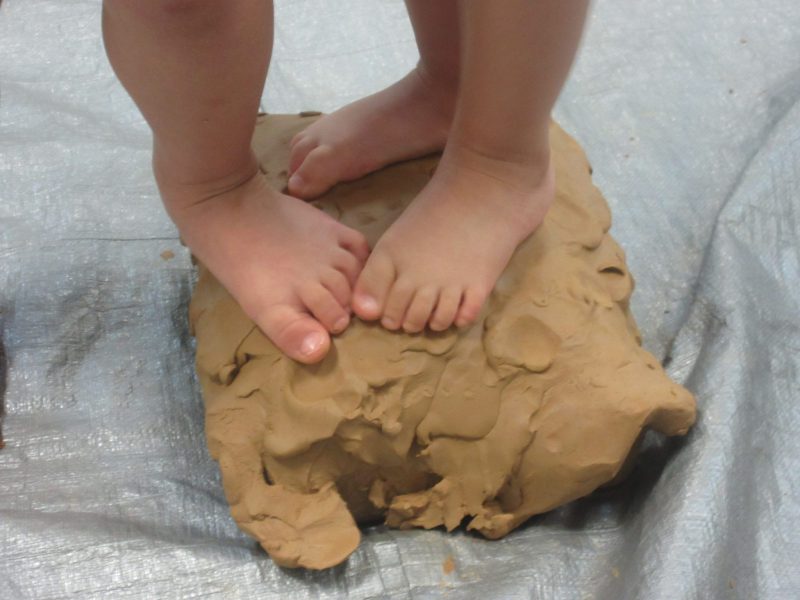Campbell House News

Developing Relationships with Materials: Clay
Understanding a new material and its properties helps children to gain new skills and knowledge on how to use a material for expression and communication. As their relationship with particular materials strengthen, children begin to develop a database of languages that they can use to express thought, ideas and feelings.
The children of the Waratah Room were invited to explore and research clay, using whole body exploration. Children were encouraged to explore the clay using their hands, arms, fingers, toes and legs. This allowed children the time and space to develop an understanding of the material, how it works, and how it changes under different conditions.
The children will continue using various techniques with the clay and expanding their vocabulary around these skills and techniques. This includes introducing slip, moulding, shaping and smoothing.
‘As young children bring their whole bodies to their relationship with the clay, they experience the responsiveness of the clay. This first encounter, body to body, begins the dialogue between the children and the clay.’
Ann Pelo, 2007
The Reggio Emilia Approach
The Reggio Emilia approach to learning encompasses and embraces the findings, with great respect, of educational researchers Dewey, Vygotsky, Piaget and numerous other learning experts investigating how the formative years are so critical to effective and further learning.
Just after Second World War, Loris Malaguzzi, a young teacher in Italy, encouraged other families with young children to join him in a highly charged pursuit for excellence in childcare. He did this with knowledge based on his findings and the learning of experts already mentioned. They were of the one voice, in the notion, that the impact of early learning is huge and that best practice must always be central to all that is offered to young learners.
At the centre of the Reggio Emilia system, is what is known as the powerful image of the child. The child is never seen as an empty vessel waiting to be filled with facts and information from adults, but seen as being full of potential, competent, capable and confident. The firm belief being that educators and parents must place higher value upon the search for constructive strategies of thinking and action rather than the direct transmission of skills and knowledge.
Campbell House staff work with this commitment and belief to ensure the learners in Campbell House are immersed in activities and tasks using the Reggio Emilia approach and the image of the child is always central. Competence, capability and confidence is always treated with care and great respect.
Uniform Term 2, 2017
Uniform in Terms 2 and 3 in particular is the winter ELC uniform as listed below:
- St Catherine’s track pants
- St Catherine’s skivvy/polo shirt
- St Catherine’s fleecy top
- Sneakers (of own choice)
- School sports socks
Optional: St Catherine’s spray jacket
Given the early start to Term 2, the weather may still offer some warm days. Therefore, we ask parents to be guided by weather conditions and forecasts at this time. Summer uniform may be worn if weather is warm and suitable.
We ask that parents to ensure that children are well prepared, as mornings at this stage of the year can be very cold.
Important Dates for your Diary
Grandparents’ and Special Visitors’ Day
Waratah and Blue Gum Room Thursday 25 May, 9.30am -10.30am
Banksia and Wattle Room Friday 26 May, 9.30am-10.30am
An invitation to Tour the Junior School (Barbreck)
There are so many interesting things happening in Barbreck, the St Catherine’s Junior School. Any Campbell House parents who would like a tour of Barbeck, to observe our students at work and hear about the Junior School curriculum are warmly invited to call the Mrs Mary Poulos, Personal Assistant to the Head of Junior School (9828 3020) to make an appointment to meet with Mrs Alana Moor.
Labels
Please label all belongings very clearly. Named items are returned to owners as promptly as possible. Teaching children the importance of valuing and looking after items is very important. Some children are already checking labels for their belongings and this is where reading skills commence.






